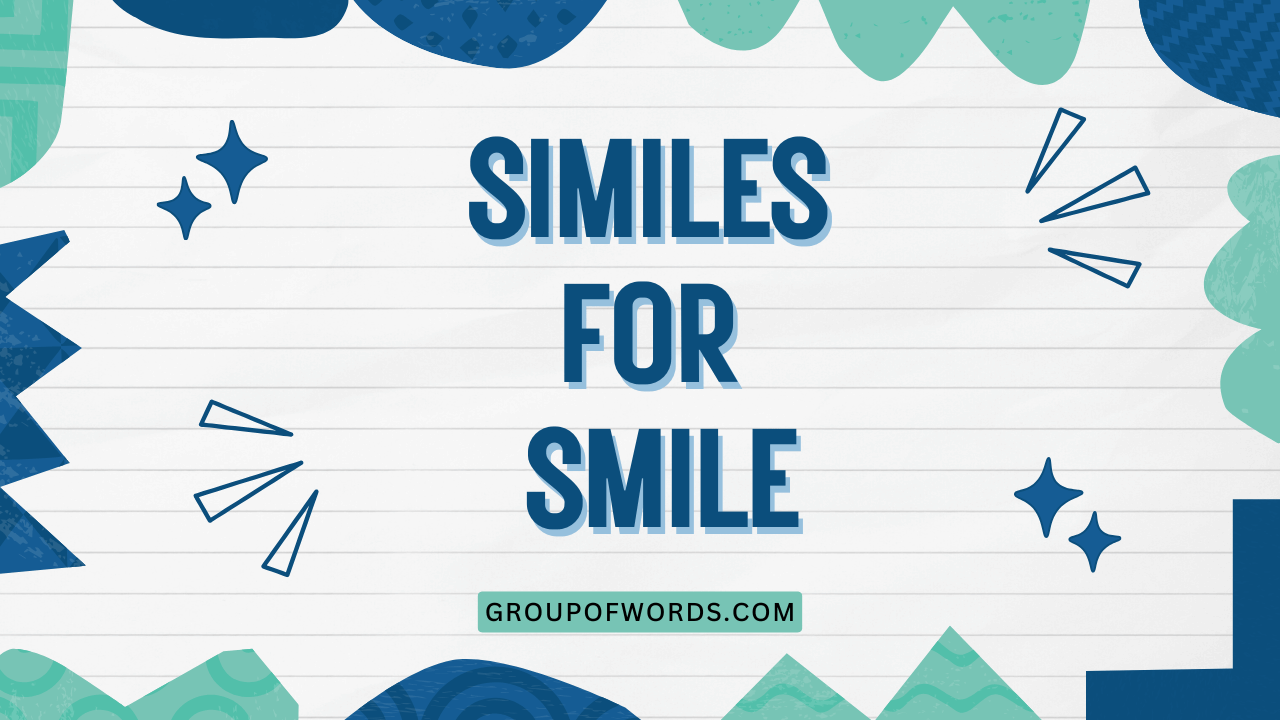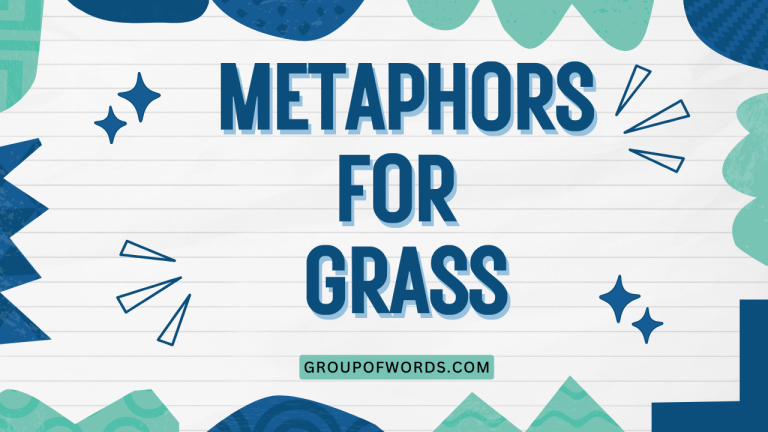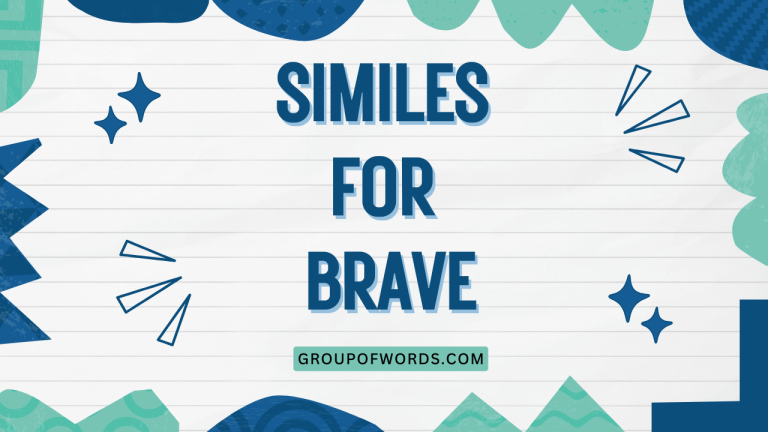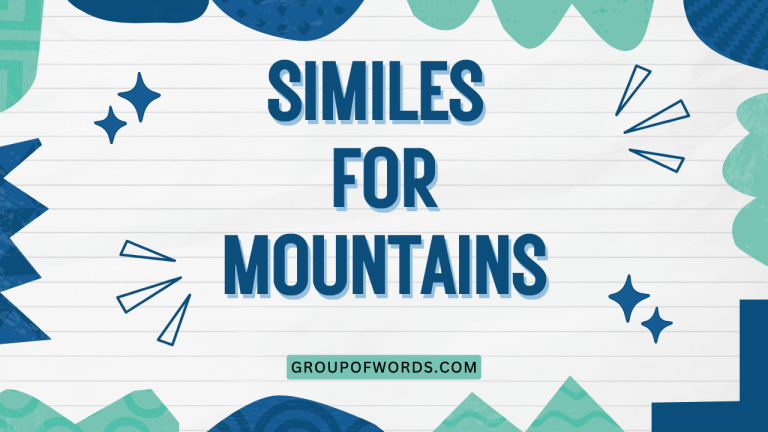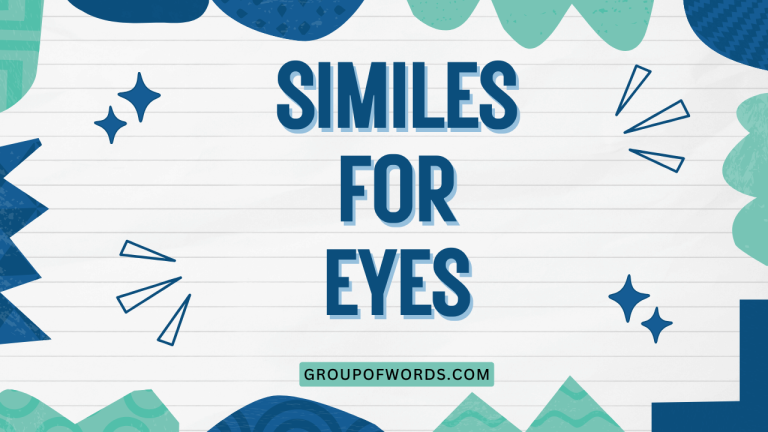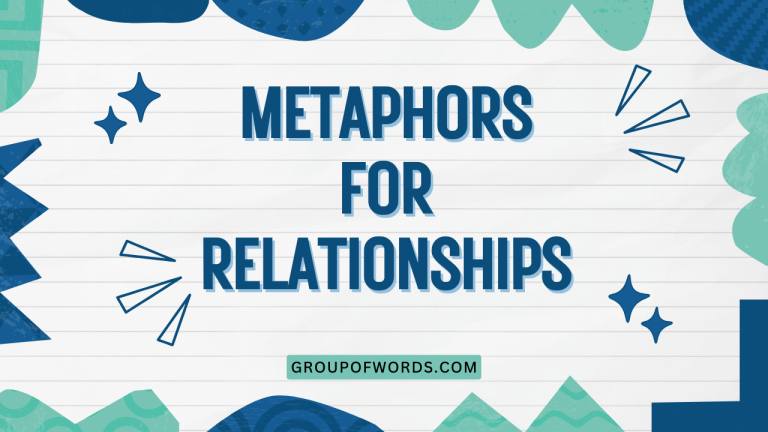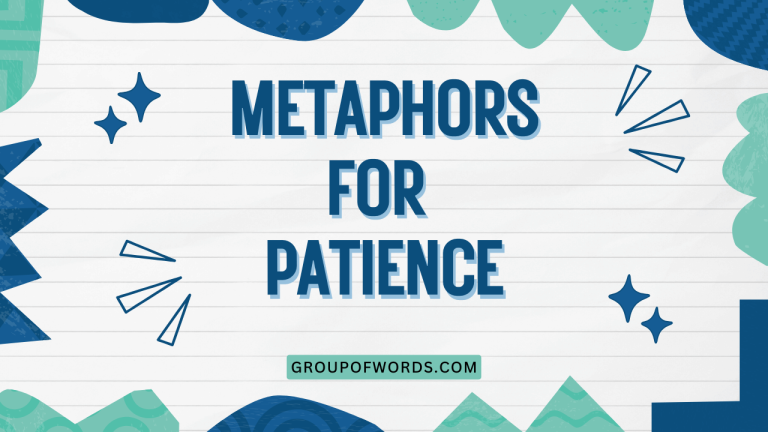Similes for Smiles: A Comprehensive Guide
Smiles are a universal language, capable of expressing a wide range of emotions from joy and contentment to amusement and even irony. To effectively capture the nuances of a smile in writing, similes offer a powerful tool.
This article delves into the art of crafting similes for smiles, exploring various types, structural elements, and usage rules. Whether you’re a student, writer, or simply someone looking to enhance your descriptive vocabulary, this guide provides the knowledge and practice needed to master the art of simile creation.
Understanding how to use similes effectively can significantly improve your ability to convey emotions and create vivid imagery. This article will benefit anyone seeking to enhance their writing skills, from students learning literary techniques to professionals aiming for more impactful communication.
By the end of this guide, you’ll be equipped with a diverse range of similes for smiles and the knowledge to use them appropriately and creatively.
Table of Contents
- Definition of Simile
- Structural Breakdown of Similes
- Types of Similes
- Examples of Similes for Smiles
- Usage Rules for Similes
- Common Mistakes with Similes
- Practice Exercises
- Advanced Topics in Simile Usage
- Frequently Asked Questions
- Conclusion
Definition of Simile
A simile is a figure of speech that directly compares two different things, explicitly using the words “like” or “as.” The purpose of a simile is to create a vivid image or to emphasize a particular quality of one thing by associating it with another. Similes are essential tools in descriptive writing, allowing authors to convey emotions, ideas, and sensory experiences in a more engaging and impactful way. They differ from metaphors, which imply a comparison without using “like” or “as,” thus creating a more direct and often symbolic relationship.
The function of a simile is to enhance understanding or appreciation of a subject by drawing a parallel to something familiar or easily understood. For instance, describing a smile as “bright as the sun” helps the reader immediately grasp the radiant and joyful nature of the smile.
Similes can be used in various contexts, including literature, poetry, everyday conversation, and persuasive writing. Their adaptability makes them a versatile element of effective communication.
Structural Breakdown of Similes
A simile typically consists of three key components: the subject, the linking word (like or as), and the object of comparison. The subject is the thing being described (in our case, a smile). The linking word establishes the comparison. The object of comparison is something that shares a similar quality with the subject, allowing the reader to understand the subject better.
The general structure of a simile follows this pattern: Subject + Linking Word (like/as) + Object of Comparison. For example, in the simile “Her smile was as radiant as the sunrise,” “her smile” is the subject, “as” is the linking word, and “the sunrise” is the object of comparison. Understanding this structure allows for the creation of clear and effective similes.
Types of Similes
Similes can be categorized based on the type of comparison they make. Some common categories include:
Descriptive Similes
These similes focus on describing the physical appearance or quality of the subject. For example, “His smile was like a ray of sunshine” describes the brightness and warmth of the smile.
Emotional Similes
These similes convey the emotional impact or feeling associated with the subject. For example, “Her smile was as comforting as a warm blanket” describes the soothing and reassuring nature of the smile.
Action Similes
These similes compare the action or effect of the subject to something else. For example, “His smile spread like wildfire” describes how quickly and widely the smile appeared.
Abstract Similes
These similes compare the subject to an abstract concept or idea. For example, “Her smile was as genuine as truth itself” describes the sincerity and authenticity of the smile.
Examples of Similes for Smiles
The following tables provide a range of similes for smiles, categorized for clarity and ease of use. These examples showcase the versatility and creativity possible when crafting similes.
Table 1: Descriptive Similes for Smiles
This table presents similes that focus on the physical attributes of a smile, such as its brightness, shape, or overall appearance.
| Simile | Explanation |
|---|---|
| Her smile was as bright as the morning star. | Emphasizes the radiant quality of the smile. |
| His smile was like a crescent moon. | Describes the gentle curve of the smile. |
| Her smile was as radiant as a summer day. | Highlights the warmth and happiness associated with the smile. |
| His smile was like a flash of lightning. | Suggests a sudden and striking smile. |
| Her smile was as gentle as a breeze. | Describes a soft and subtle smile. |
| His smile was like a painted rainbow. | Implies a colorful and vibrant smile. |
| Her smile was as dazzling as a diamond. | Emphasizes the brilliance and attractiveness of the smile. |
| His smile was like a warm fireplace on a cold night. | Describes the comforting and inviting quality of the smile. |
| Her smile was as wide as the horizon. | Highlights the expansive and genuine nature of the smile. |
| His smile was like the first bloom of spring. | Suggests a fresh and hopeful smile. |
| Her smile was as clear as a mountain stream. | Describes a pure and genuine smile. |
| His smile was like a beacon in the night. | Implies a guiding and hopeful smile. |
| Her smile was as lovely as a blooming rose. | Emphasizes the beauty and grace of the smile. |
| His smile was like a perfectly drawn curve. | Describes the aesthetic appeal of the smile. |
| Her smile was as inviting as an open door. | Highlights the welcoming nature of the smile. |
| His smile was like the sparkle of sunlight on water. | Suggests a lively and cheerful smile. |
| Her smile was as serene as a still lake. | Describes a peaceful and calming smile. |
| His smile was like a hidden treasure revealed. | Implies a rare and precious smile. |
| Her smile was as comforting as a mother’s embrace. | Emphasizes the nurturing and caring quality of the smile. |
| His smile was like a burst of confetti. | Suggests a joyful and celebratory smile. |
| Her smile was as captivating as a work of art. | Describes the mesmerizing and engaging nature of the smile. |
| His smile was like a gentle sunrise. | Implies a warm and hopeful smile. |
| Her smile was as soothing as a lullaby. | Describes a calming and reassuring smile. |
| His smile was like the warmth of summer. | Suggests a cheerful and inviting smile. |
| Her smile was as pure as driven snow. | Describes a genuine and innocent smile. |
| His smile was like a burst of sunshine after a storm. | Implies a hopeful and uplifting smile. |
Table 2: Emotional Similes for Smiles
This table contains similes that focus on the emotional impact or the feeling that the smile evokes.
| Simile | Explanation |
|---|---|
| Her smile was as comforting as a warm blanket. | Emphasizes the soothing and reassuring quality of the smile. |
| His smile was like a burst of joy. | Suggests a sudden and intense feeling of happiness. |
| Her smile was as infectious as a catchy tune. | Highlights the way the smile spreads to others. |
| His smile was like a ray of hope in the darkness. | Implies a source of optimism and encouragement. |
| Her smile was as genuine as a child’s laughter. | Describes the sincerity and authenticity of the smile. |
| His smile was like a secret shared between friends. | Suggests intimacy and connection. |
| Her smile was as warm as a mother’s love. | Emphasizes the nurturing and caring quality of the smile. |
| His smile was like a gentle reminder of better days. | Implies comfort and nostalgia. |
| Her smile was as reassuring as a familiar voice. | Describes the calming and supportive nature of the smile. |
| His smile was like a celebration of life. | Suggests joy and appreciation. |
| Her smile was as uplifting as a gospel choir. | Highlights the inspiring and energizing quality of the smile. |
| His smile was like a promise of good things to come. | Implies optimism and anticipation. |
| Her smile was as heartfelt as a handwritten letter. | Emphasizes the sincerity and personal touch of the smile. |
| His smile was like a beacon of friendliness. | Suggests warmth and approachability. |
| Her smile was as radiant as pure happiness. | Describes the pure joy reflected in the smile. |
| His smile was like a gentle wave of affection. | Implies a subtle but meaningful expression of love. |
| Her smile was as comforting as a favorite song. | Highlights the soothing and familiar quality of the smile. |
| His smile was like a burst of sunshine on a cloudy day. | Suggests a source of joy and positivity. |
| Her smile was as encouraging as a coach’s pep talk. | Emphasizes the motivating and supportive nature of the smile. |
| His smile was like a silent thank you. | Implies gratitude and appreciation. |
| Her smile was as genuine as a newborn’s gaze. | Describes the innocent and authentic quality of the smile. |
| His smile was like a warm hug. | Suggests comfort and affection. |
| Her smile was as revitalizing as a deep breath. | Highlights the refreshing and energizing quality of the smile. |
| His smile was like a secret understanding. | Implies a shared connection and empathy. |
| Her smile was as welcoming as an old friend. | Describes the warmth and familiarity of the smile. |
Table 3: Action Similes for Smiles
This table focuses on similes that describe how a smile appears or spreads, emphasizing the action or effect it has.
| Simile | Explanation |
|---|---|
| His smile spread like wildfire. | Describes how quickly and widely the smile appeared. |
| Her smile bloomed like a flower. | Suggests a gradual and beautiful unfolding of the smile. |
| His smile erupted like a volcano. | Implies a sudden and powerful smile. |
| Her smile crept across her face like sunlight. | Describes a slow and gentle spread of the smile. |
| His smile faded like a distant memory. | Suggests a gradual disappearance of the smile. |
| Her smile danced on her lips like a butterfly. | Implies a light and playful smile. |
| His smile flickered like a candle flame. | Describes a tentative and wavering smile. |
| Her smile burst forth like a dam breaking. | Suggests a sudden and unrestrained smile. |
| His smile melted away his worries like snow in the sun. | Implies a smile that dispels negativity. |
| Her smile grew like a vine, slowly encompassing her face. | Describes a gradual and encompassing smile. |
| His smile emerged like a ship from fog. | Suggests a smile that gradually becomes visible. |
| Her smile sparkled like stars in the night sky. | Implies a radiant and lively smile. |
| His smile cascaded down his face like a waterfall. | Describes a flowing and abundant smile. |
| Her smile unfolded like the wings of a butterfly. | Suggests a graceful and beautiful smile. |
| His smile popped up like a jack-in-the-box. | Implies a surprising and sudden smile. |
| Her smile shimmered like heat haze on a summer day. | Describes a subtle and fleeting smile. |
| His smile spread across his face like a sunrise. | Describes a gradual and warm smile. |
| Her smile blossomed like a garden in spring. | Suggests a beautiful and vibrant smile. |
| His smile unfolded like a story being told. | Implies a smile that conveys understanding and warmth. |
| Her smile brightened like a light being switched on. | Describes a sudden and illuminating smile. |
| His smile dissolved his anger like sugar in water. | Implies a smile that diffuses negativity. |
| Her smile rippled across her face like waves on a pond. | Describes a gentle and spreading smile. |
| His smile materialized like magic. | Suggests a sudden and delightful smile. |
| Her smile illuminated her face like a spotlight. | Describes a radiant and prominent smile. |
| His smile echoed in his eyes, like a reflection in a mirror. | Implies a genuine and heartfelt smile. |
Table 4: Similes for Sarcastic or Ironic Smiles
This table presents similes that describe smiles with a sarcastic or ironic tone, highlighting the contrast between appearance and true feeling.
| Simile | Explanation |
|---|---|
| His smile was as genuine as a politician’s promise. | Implies insincerity and lack of authenticity. |
| Her smile was like a mask, hiding her true feelings. | Suggests a deceptive or artificial smile. |
| His smile was as warm as a winter breeze. | Highlights the lack of warmth and sincerity. |
| Her smile was like a perfectly rehearsed act. | Describes a forced and unnatural smile. |
| His smile was as comforting as a dentist’s drill. | Implies discomfort and unease. |
| Her smile was like a sales pitch, designed to manipulate. | Suggests a calculated and insincere smile. |
| His smile was as sincere as a used car salesman’s guarantee. | Implies dishonesty and untrustworthiness. |
| Her smile was like a plastic flower, pretty but lifeless. | Describes a smile that lacks genuine emotion. |
| His smile was as heartfelt as a corporate apology. | Highlights the insincerity and lack of remorse. |
| Her smile was like a painted smile on a mannequin. | Suggests a vacant and emotionless smile. |
| His smile was as convincing as a magician’s trick. | Implies deception and illusion. |
| Her smile was like a carefully crafted lie. | Describes a smile intended to deceive. |
| His smile was as genuine as a reality TV show. | Highlights the artificiality and lack of authenticity. |
| Her smile was like a robot’s programmed response. | Suggests a mechanical and emotionless smile. |
| His smile was as comforting as a tax audit. | Implies discomfort and stress. |
| Her smile was like a mirage in the desert, promising something it couldn’t deliver. | Describes a deceptive and unfulfilling smile. |
Usage Rules for Similes
To use similes effectively, it’s important to follow certain guidelines:
- Clarity: Ensure the comparison is clear and easily understood. The object of comparison should be familiar to the reader.
- Relevance: The object of comparison should share a relevant quality with the subject. The similarity should be meaningful and contribute to the overall description.
- Originality: Strive for originality to make your writing more engaging and memorable. Avoid clichés and overused similes.
- Context: Consider the context and tone of your writing. Choose similes that are appropriate for the situation and the intended audience.
- Avoid Mixed Metaphors/Similes: Do not combine unrelated comparisons that create confusion.
Understanding these rules will help you create similes that are both effective and impactful. By paying attention to clarity, relevance, originality, and context, you can enhance your writing and convey your ideas more effectively.
Common Mistakes with Similes
Several common mistakes can undermine the effectiveness of similes. Recognizing and avoiding these errors will improve your writing.
Using Clichés: Overused similes like “as happy as a lark” or “like a fish out of water” lack originality and can make your writing seem uninspired.
Incorrect Comparisons: Comparing things that have no meaningful similarity can create confusion. For example, “His smile was like a brick wall” doesn’t convey a clear or relevant comparison.
Mixing Metaphors and Similes: Confusing metaphors and similes can lead to illogical or nonsensical comparisons. For instance, “Her smile was a ray of sunshine, like a warm blanket” mixes a metaphor (“ray of sunshine”) with a simile (“like a warm blanket”) inappropriately.
Here are some examples of common mistakes and their corrections:
| Incorrect | Correct | Explanation |
|---|---|---|
| His smile was like a rose. | His smile was like a blooming rose, full of life and color. | The original simile is too generic. The corrected version adds detail and specificity. |
| Her smile was as big as a house. | Her smile was as wide as the horizon, full of warmth and joy. | The original simile is illogical. The corrected version provides a more relevant and descriptive comparison. |
| His smile was a ray of sunshine, like a gentle breeze. | His smile was like a ray of sunshine, warming everyone around him. | The original sentence mixes a metaphor and a simile. The corrected version uses a simile consistently. |
Practice Exercises
Test your understanding of similes with the following exercises. Create similes for “smile” based on the prompts provided.
Exercise 1: Descriptive Similes
Create descriptive similes for a smile based on the following prompts.
| Question | Answer |
|---|---|
| 1. A radiant, dazzling smile. | Her smile was as radiant as a diamond. |
| 2. A gentle, subtle smile. | His smile was as gentle as a summer breeze. |
| 3. A wide, expansive smile. | Her smile was as wide as the open sky. |
| 4. A quick, fleeting smile. | His smile was like a flash of lightning. |
| 5. A warm, inviting smile. | Her smile was like a warm fireplace on a cold night. |
| 6. A bright, cheerful smile | His smile was as bright as the morning sun. |
| 7. A soft, subtle smile | Her smile was as soft as a whisper. |
| 8. A dazzling, radiant smile | His smile was like a star shining in the night. |
| 9. A genuine, pure smile | Her smile was as pure as fresh snow. |
| 10. A comforting, gentle smile | His smile was like a warm embrace. |
Exercise 2: Emotional Similes
Create emotional similes for a smile based on the following prompts.
| Question | Answer |
|---|---|
| 1. A comforting, reassuring smile. | Her smile was as comforting as a warm hug. |
| 2. A joyful, uplifting smile. | His smile was like a burst of joy. |
| 3. A genuine, heartfelt smile. | Her smile was as genuine as a child’s laughter. |
| 4. A hopeful, encouraging smile. | His smile was like a ray of hope in the darkness. |
| 5. An infectious, contagious smile. | Her smile was as infectious as a catchy tune. |
| 6. A warm, loving smile | His smile was as warm as a mother’s love. |
| 7. A reassuring, calming smile | Her smile was like a gentle lullaby. |
| 8. A happy, carefree smile | His smile was as light as a feather. |
| 9. A supportive, encouraging smile | Her smile was like a pat on the back. |
| 10. A grateful, thankful smile | His smile was as sincere as a heartfelt thank you. |
Exercise 3: Action Similes
Create action similes for a smile based on the following prompts.
| Question | Answer |
|---|---|
| 1. A smile that spreads quickly. | His smile spread like wildfire. |
| 2. A smile that blooms beautifully. | Her smile bloomed like a flower. |
| 3. A smile that fades gradually. | His smile faded like a distant memory. |
| 4. A smile that dances playfully. | Her smile danced on her lips like a butterfly. |
| 5. A smile that bursts forth suddenly. | His smile burst forth like a dam breaking. |
| 6. A smile that melts away worries | Her smile melted away his worries like snow in the sun. |
| 7. A smile that grows slowly | His smile crept across his face like sunlight. |
| 8. A smile that sparkles brightly | Her smile sparkled like stars in the night sky. |
| 9. A smile that unfolds gracefully | His smile unfolded like the wings of a butterfly. |
| 10. A smile that illuminates the face | Her smile illuminated her face like a spotlight. |
Advanced Topics in Simile Usage
For advanced learners, exploring more complex aspects of simile usage can further enhance their writing skills.
Extended Similes: These involve developing a simile over several sentences or even paragraphs, creating a more elaborate and detailed comparison.
Subverted Similes: These intentionally break the expected pattern of a simile, creating a surprising or humorous effect. For example, “His smile was as comforting as a root canal” uses irony to convey a negative feeling.
Cultural Sensitivity: Be mindful of cultural differences when using similes. Some comparisons may not be universally understood or appreciated.
By mastering these advanced topics, you can elevate your writing to a higher level of sophistication and creativity.
Frequently Asked Questions
Here are some frequently asked questions about similes:
- What is the difference between a simile and a metaphor?
A simile is a direct comparison using “like” or “as,” while a metaphor implies a comparison without these words. For example, “Her smile was like sunshine” (simile) vs. “Her smile was sunshine” (metaphor).
- How can I avoid using clichés in my similes?
Strive for originality by thinking of unique and unexpected comparisons. Instead of “as happy as a lark,” try “as happy as a child on Christmas morning.”
- Can a simile be too long?
Yes, a simile can become cumbersome if it’s too long or overly detailed. Keep your similes concise and focused on the key comparison.
- Is it okay to use similes in formal writing?
Yes, similes can be used in formal writing, but use them sparingly and ensure they are appropriate for the context and audience.
- How do I choose the right object of comparison for a simile?
Choose an object that shares a relevant quality with the subject and is easily understood by your audience. The comparison should enhance understanding and create a vivid image.
- What if I can’t think of a good simile?
Brainstorm different qualities of the subject and then think of things that share those qualities. Use a thesaurus to find alternative words and ideas.
- Are similes only used in descriptive writing?
No, similes can be used in various types of writing, including persuasive, narrative, and even technical writing, to clarify complex ideas or create a memorable impact.
- Can I use multiple similes in one sentence?
While technically possible, using multiple similes in a single sentence can often make the sentence cumbersome and confusing. It’s generally better to use one well-crafted simile per sentence for clarity and impact.
Conclusion
Mastering the art of crafting similes for smiles is a valuable skill for anyone looking to enhance their descriptive writing. By understanding the structure, types, and usage rules of similes, you can create vivid and impactful comparisons that effectively convey emotions and ideas.
Remember to strive for clarity, relevance, and originality in your similes, and avoid common mistakes like using clichés or incorrect comparisons.
Through practice and experimentation, you can develop your own unique style of simile creation. Use the examples and exercises provided in this guide as a starting point, and continue to explore the possibilities of this powerful literary device.
With dedication and creativity, you can transform your writing and bring your descriptions to life.
